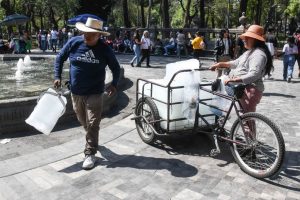
The food insecurity in Colombia It continues to be a topic that has been the talk of the country in the last week.
If a magnifying glass is put on how this scourge has manifested itself in the country, it can be found that factors such as the Unemployment, household income and family composition are some of the triggers for this situation.
(UN highlights the advances in the development of agrarian reform).
In the case of the last scope, more nuances must be taken into account, such as the prevalence of this problem according to the size of each household,
“The prevalence of food insecurity grows with the size of households, especially those with 2 members or more. (…) For the national total, 24 out of every 100 households made up of one person experience moderate or severe food insecurity, a level that is statistically equal to that registered in households of 2 persons. For its part, the prevalence of food insecurity increases to 40 out of every 100 when households have 5 or more people.yes,” explains the National Administrative Department of Statistics (Dane) in its latest Quality of Life Survey.
(El Niño would hit the productivity of Bogotá and Medellín the hardest).
This means that, according to the entity, the single parent households They are the ones with the highest prevalence of moderate or severe food insecurity (33 out of every 100 households, according to the study).
Households with minors, older adults or people aged 5 and over with disabilities
For this case, in 2022 it shows that the presence of children under 5 years of age, children and/or adolescents under 18 years of age or people aged 5 and over with disabilities households are more likely to experience moderate or severe food insecurity.
(In the first half, producer costs fell 6.02%).
“In households that have at least one child under 5 years of age, the probability of moderate or severe food insecurity is 36.5%, on average, compared to 26.3% in households
no minors“, maintained the Dane.
In the case of minors under 18 years of age, the prevalences are of an average of 32.8 %. In the case of households where there is at least one person in that age range, compared to the 23.6% in homes that do not have this characteristic.
(The departments of the country with the greatest food insecurity).
In the case of people with disabilities, the prevalence increases to 38.5% compared to 26.7% in homes where people in that condition do not live.
Speaking of the presence of older adults, their presence reduces the probability that the household experiences moderate or severe food insecurity, with an average of 26.9%.
Households with housing deficit
According to habitability conditions of the homes that households havereveals that the probability of experiencing levels of food insecurity moderate either serious it is higher for those who occupy homes with structural and non-structural deficiencies.
(Food insecurity in Colombia: what the Government proposes).
“In the consolidated country, this difference is close to double, to the extent that food insecurity affects 22 out of every 100 households without a housing deficit and grows to 41 out of every 100 households with a housing deficit. Although this difference is registered in urban and rural areas, the gap is significantly higher in the first“, mentions the Dane.
If you want to read the full report of the 2022 Food Insecurity Experience Scales report, you can go to following link.
BRIEFCASE




![[Img #74662]](https://thelatestnews.world/wp-content/uploads/2024/12/Organisms-with-the-shortest-life-150x150.jpg)








